Miner’s lettuce is a wild-growing edible weed that is highly nutritious. Also known as claytonia or “winter purslane,” this plant is loaded with vitamin C and minerals and has medicinal properties. Plus, miner’s lettuce is a delicious addition to salads and soups!
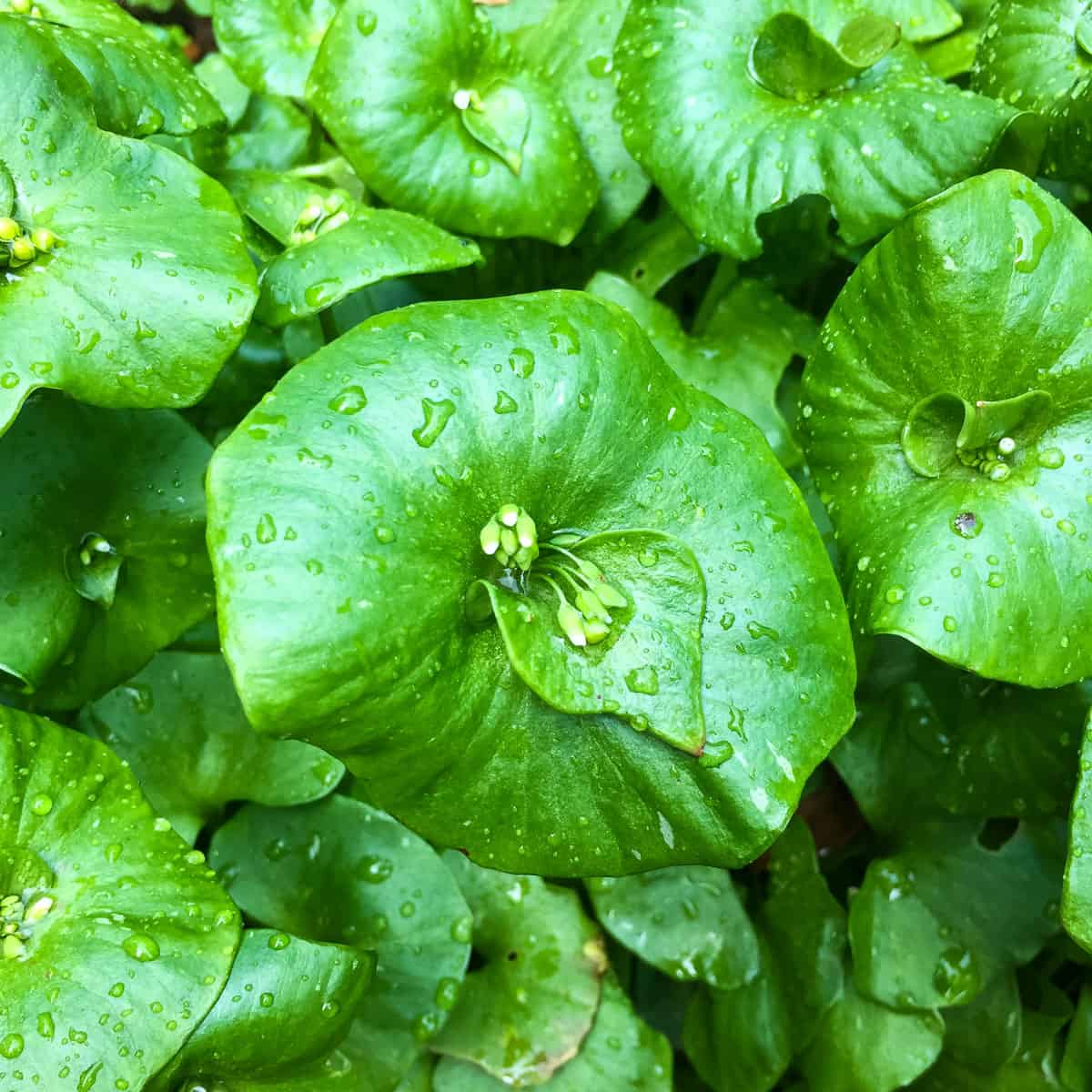
Want to save this post for later?
Wildcrafting Weeds
If you want to learn more about the edible and medicinal weeds that surround us and how to use them, check out my eBook: Wildcrafting Weeds: 20 Easy to Forage Edible and Medicinal Plants (that might be growing in your backyard)!
About Miner’s Lettuce
Miner’s lettuce (Claytonia perfoliata) is a wonderful wild green native to the West Coast of the United States. It grows almost everywhere, and harvesting is plentiful by springtime.
It usually grows during spring and fall, but in milder climates, it also can keep growing during the winter. I’ve seen huge patches under conifer trees as early as January in Northern California!
Historically, miner’s lettuce was used by Indigenous Americans in California for food and medicine. The native Ohlone people called it “rooreh” and used it medicinally in poultice form or as a juice.
This flowering plant is also known as winter purslane, although it is quite different in appearance from common purslane, which has smaller succulent paddle shaped leaves. Both are edible, though!
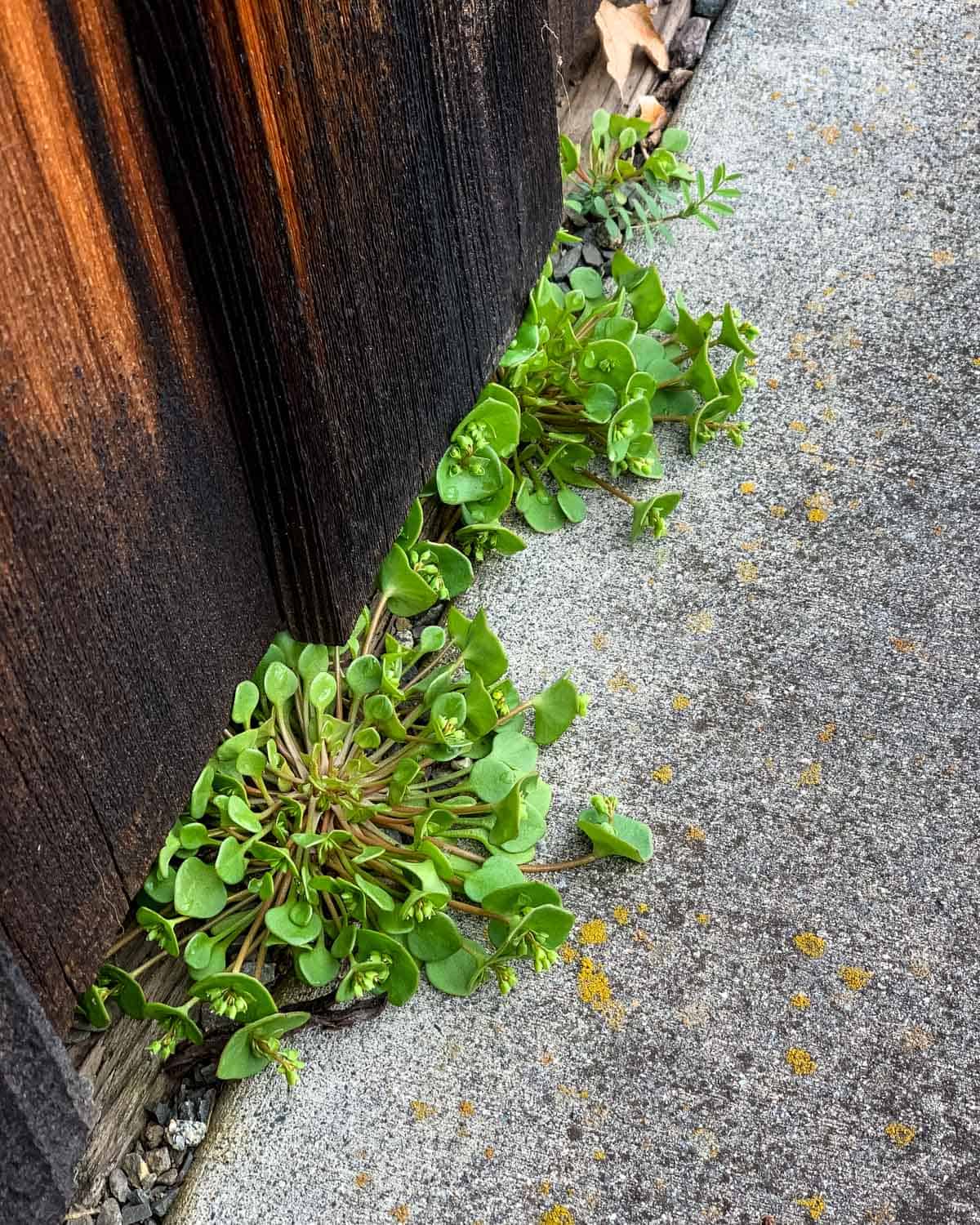
Miner’s lettuce gets its name from the California gold miners who ate it to prevent scurvy. It’s high in vitamin C, and the leaves, stems, and flowers are all edible, making harvesting and eating it simple.
While we don’t hear about scurvy too often anymore, these bits of wild greens were necessary for survival before we had conveniently triple-washed and bagged salad greens in the grocery store.
Honestly, I still think these wild greens are just as important to us today. They are super healthy, and nothing is as satisfying as picking your edible wild greens and adding them to a soup or salad.
Related: What to Forage in Spring: 20+ Edible and Medicinal Plants and Fungi
Where to Find Miner’s Lettuce
Claytonia is native to the western parts of the United States, Canada, and Mexico and is easy to find growing wildly in these areas.
It has been introduced in many other regions, including other parts of the United States and Western Europe, and it can be planted from seed in gardens as a salad green.
Miner’s lettuce prefers cool and damp areas in partial shade, so it grows prolifically on the West Coast of the US. It loves the damp, mild weather conditions and is easily found growing beneath tall trees that provide shade.
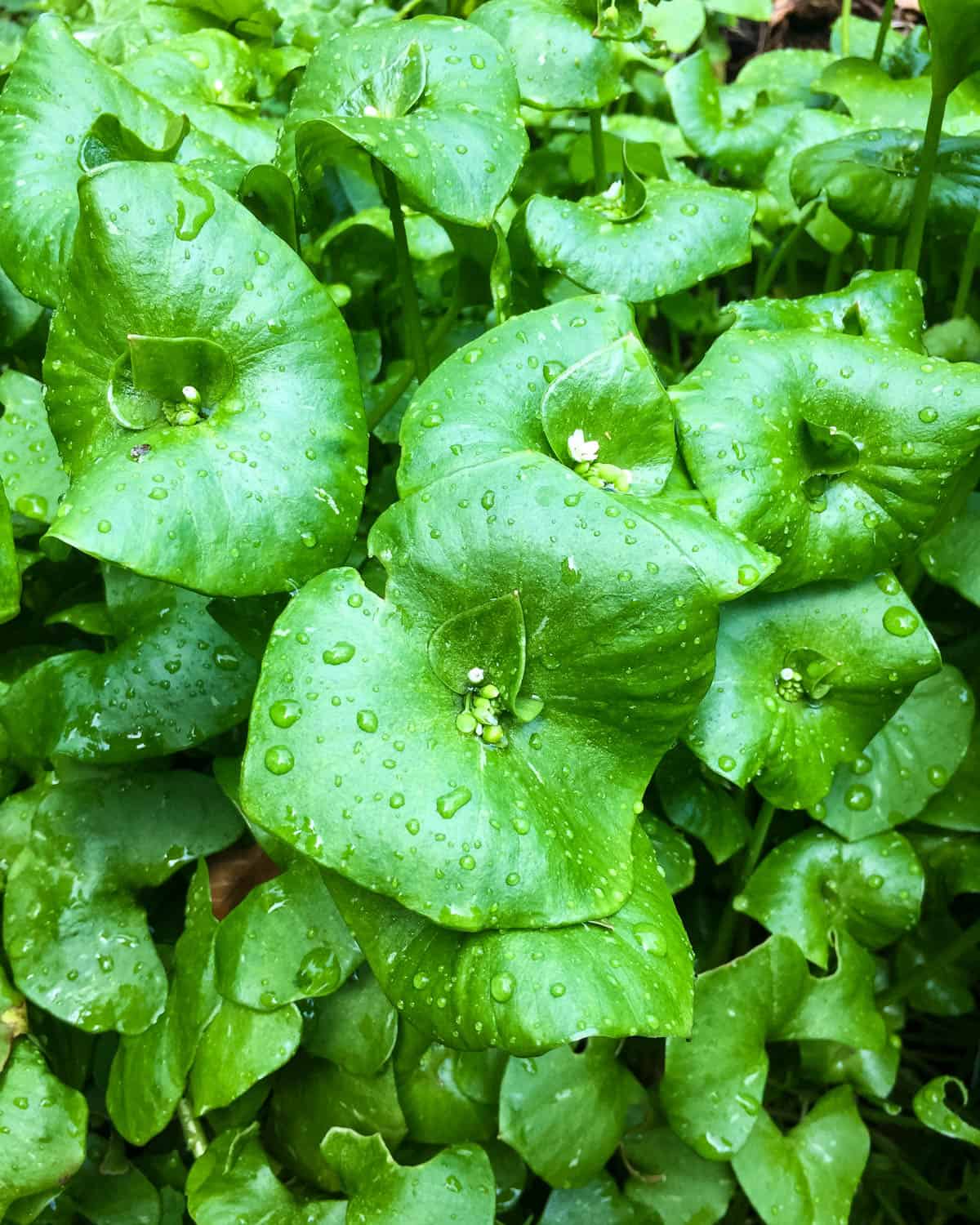
Claytonia grows in disturbed areas and is common in yards and gardens. so keep your eyes peeled for it when backyard foraging. It often grows alongside chickweed, another edible and medicinal weed.
How to Identify Miner’s Lettuce
The best part about foraging for miner’s lettuce is how plentiful it grows and how easily it is identified. It is a tender, succulent annual green that grows in a rosette shape and is mostly available in fall and springtime.
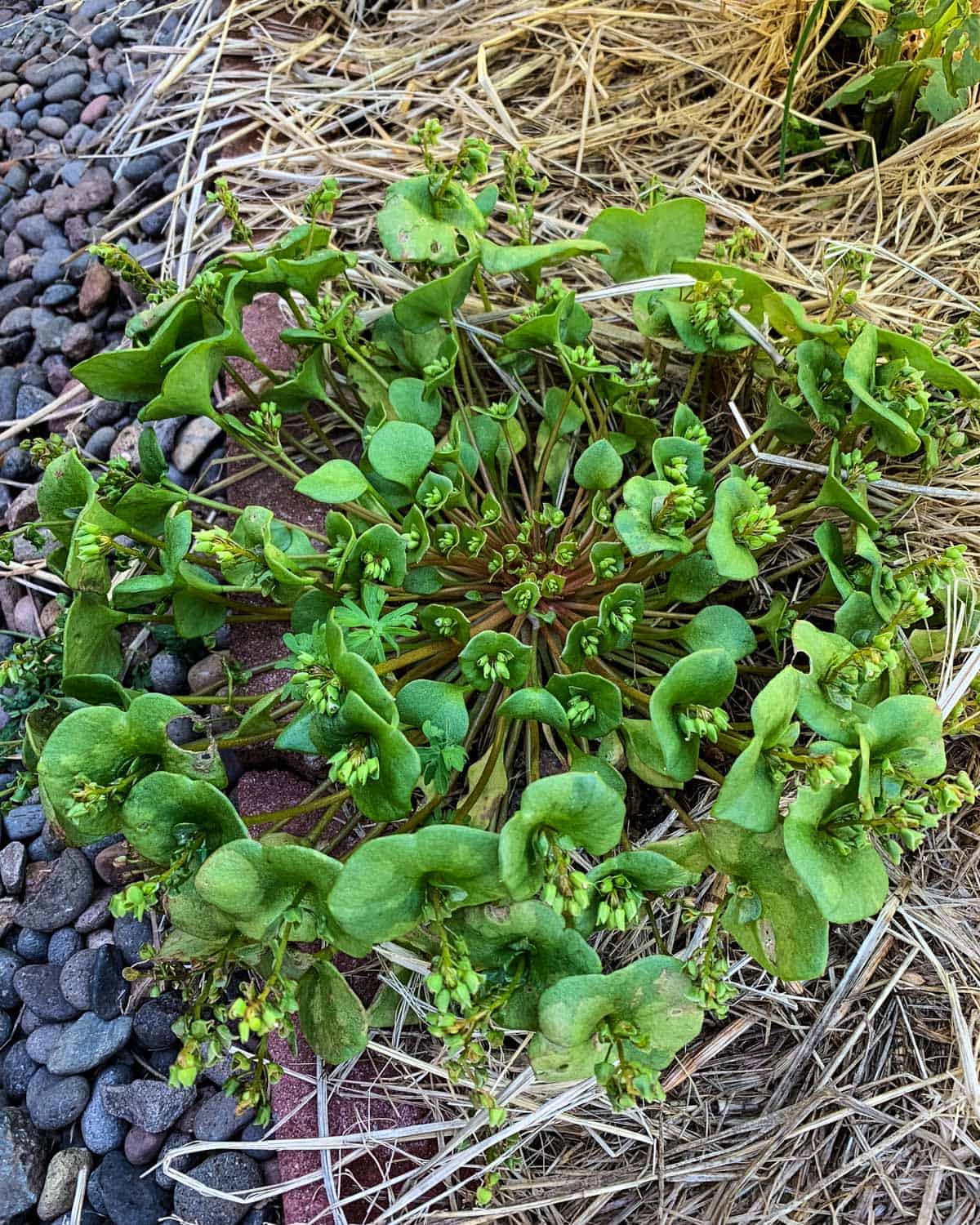
Its leaf is mostly round, almost lily pad-looking, and can range from 1 to 6 inches across. I’ve seen some huge ones on the central California coast, so believe me, they do exist!
Miner’s lettuce is pretty unmistakable once you’ve seen it with a small white or pink flower right in the middle of the lily pad-shaped leaf.
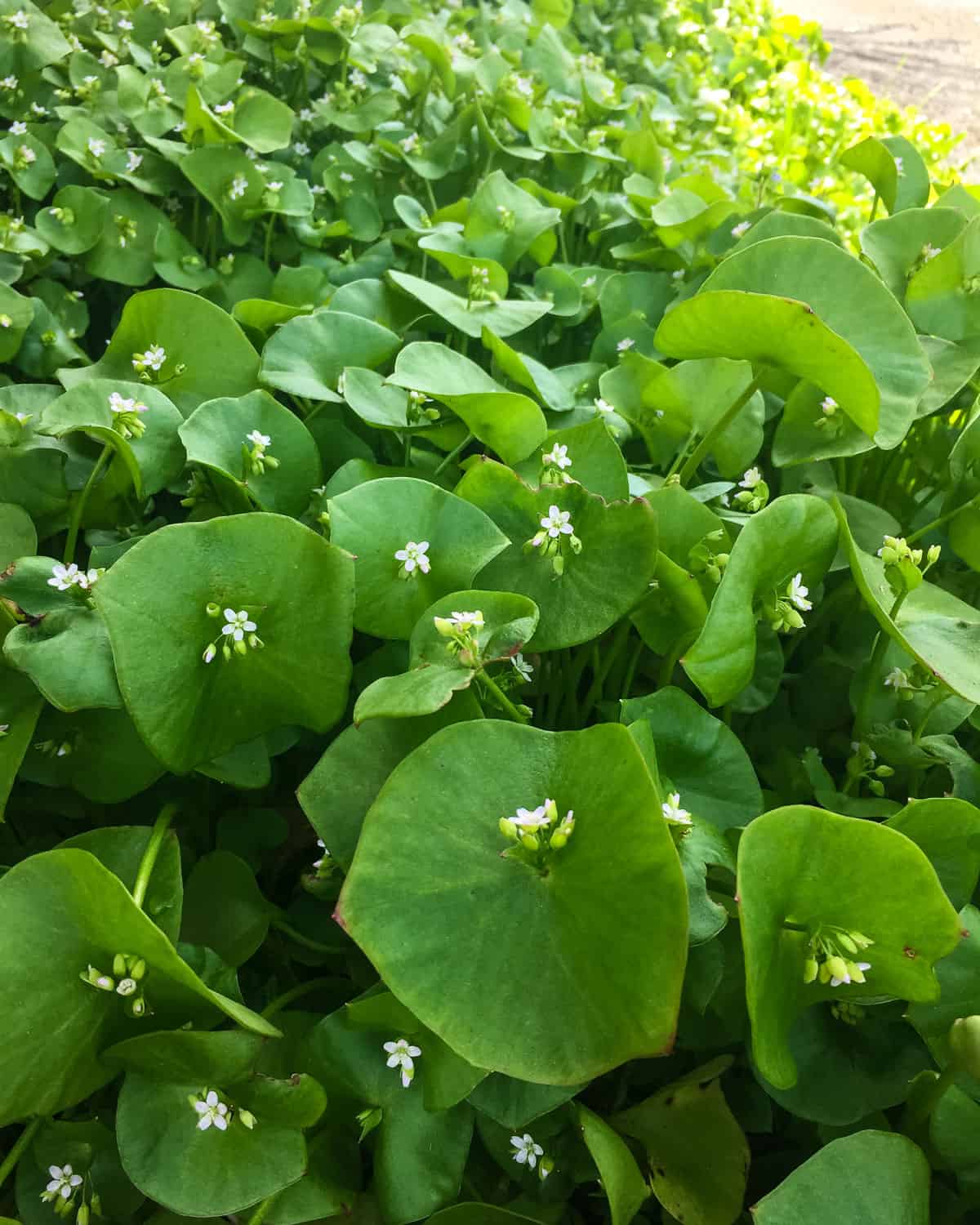
It’s an early spring wild green in the West and a welcome sight for those excited to see the end of dreary winter days for the year and ready for any small sign of spring’s beginning!
Harvesting Claytonia
When harvesting miner’s lettuce, it’s important to be certain that it hasn’t been sprayed and is growing in a clean area away from road runoff, heavy foot traffic, and pet waste.
Whether foraged from the wild or grown in your yard, miner’s lettuce is easy to harvest. With scissors or garden shears, cut the leaves like you would lettuce.
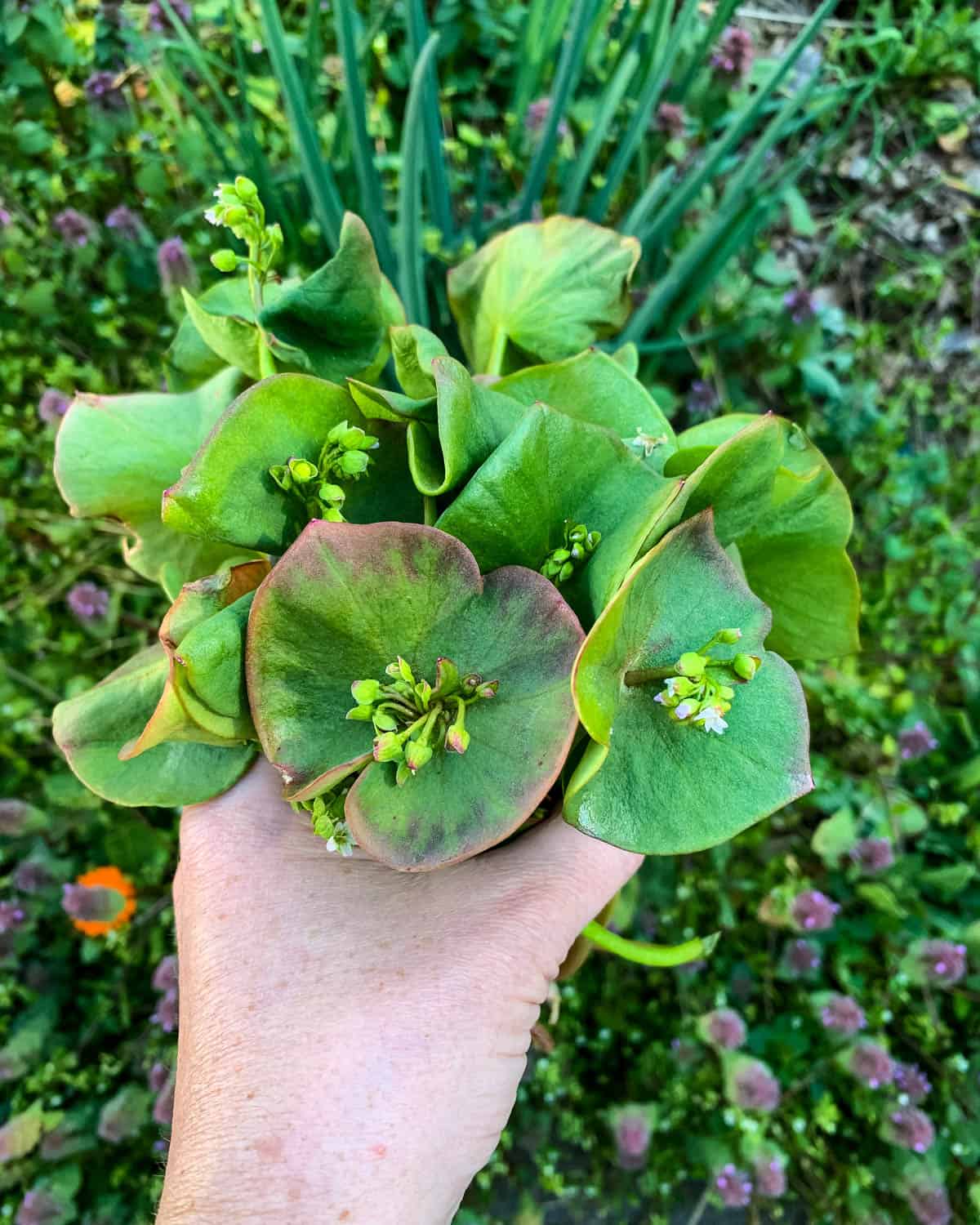
The younger leaves are more tender and have a crisp, mild, and sweet taste similar to baby spinach. As the weather warms and the leaves age, they take on a more bitter flavor.
Miner’s Lettuce Look-alikes
Luckily, miner’s lettuce has no real look-alikes, making it an excellent plant for beginning foragers. I love a plant that is easy to identify and is super low-risk to forage!
Edible Uses of Miner’s Lettuce
Miner’s lettuce is one of the tastiest edible weeds. It is easy to forage, so you’ll be throwing it into all of your salads and soups before you know it.
All parts of the plant are edible, which makes it easy to harvest and prepare. The leaves have a mild flavor and are tender and crisp, perfect for eating raw in salads, smoothies, or pesto.
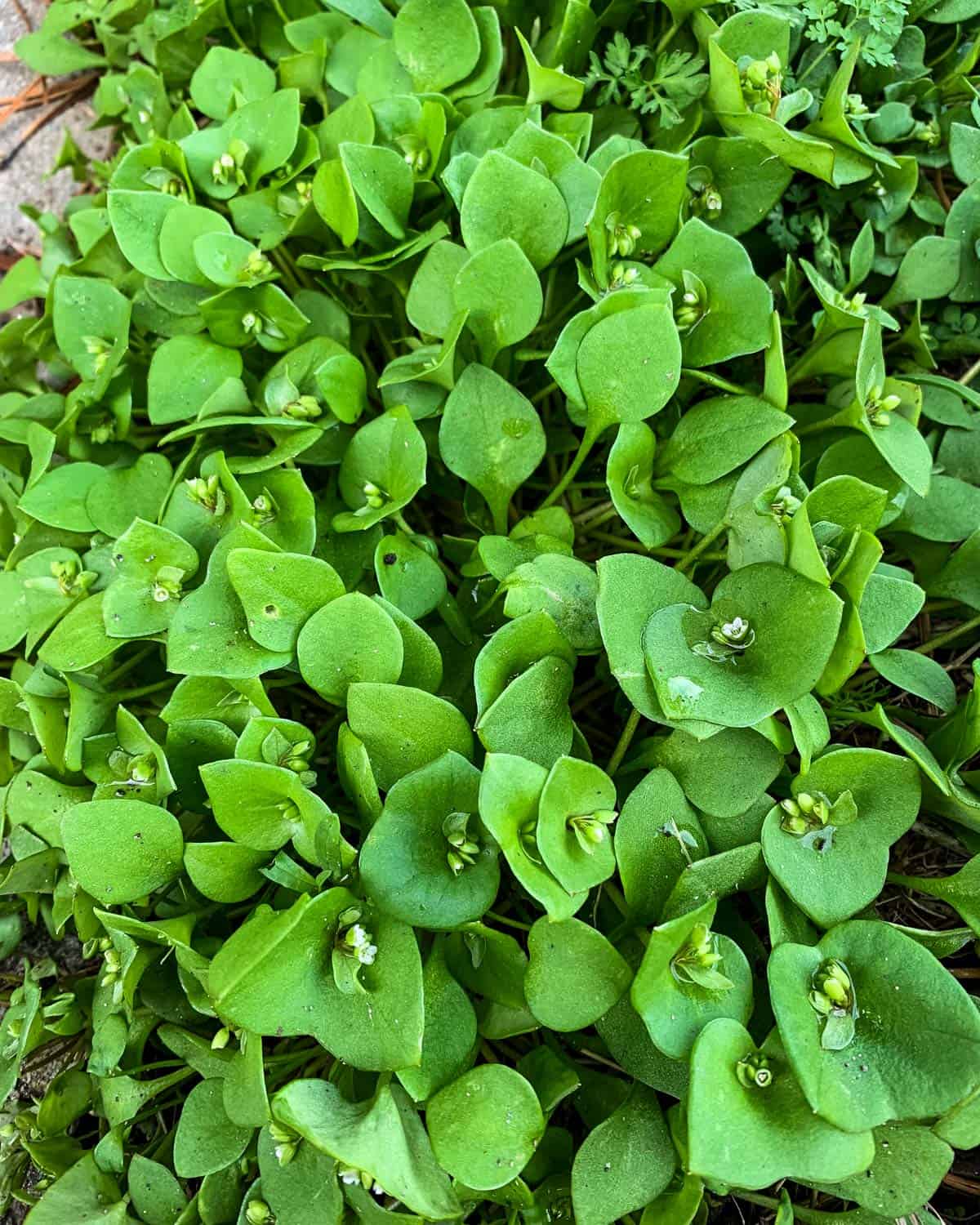
It can be cooked like spinach or added to soup. This is a very versatile plant to eat. Use it anywhere you’d normally throw extra greens in your meal, and it will taste delicious. It is great sautéed with eggs!
When it comes to flavor, edibility, and uses, miner’s lettuce is similar to chickweed and purslane. Its high vitamin C content makes it a powerful boost for immunity, too.
Medicinal Uses of Miner’s Lettuce
Miner’s lettuce is mucilaginous and contains saponins, and has cooling, soothing, and hydrating qualities that work wonderfully for dry, itchy, and irritated skin.
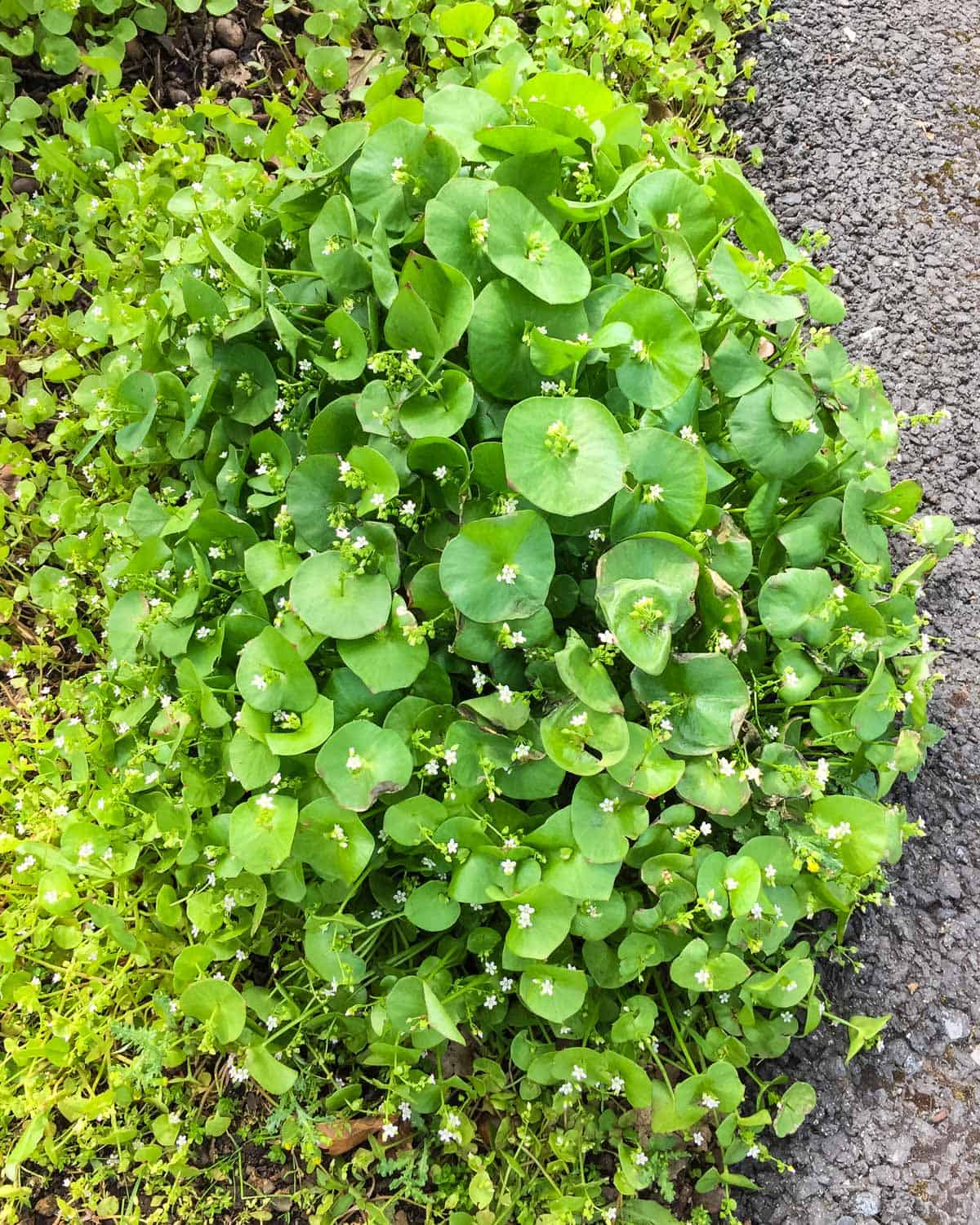
It works well to use in a poultice to soothe and help speed the healing of minor wounds and can be taken internally as a tea for digestive issues or as a general tonic.

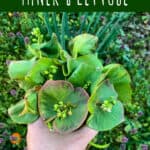

Hi Colleen, Just wondering if flower buds can be eaten as well.
We will soon be moving to Oregon and look forward to foraging and exploring nature there.
I live near Centralia, Washington and have this growing all over, especially under the first trees. The horses don’t eat it, and slugs don’t seem to bother it, but the name alone indicates it is edible. I think I will try some cooked like spinach with vinegar
Sprinkled on top.
In Trinidad we have this growing! It was is considered a weed cause it has roots like a vine that just spread all over. What I want to know, is it still an edible miner’s lettuce if there is no flower in the middle? The one I have has no flower.
It doesn’t always have a flower in the middle, but please double check with a local guide book to make sure that what you have is in fact miner’s lettuce.
I live in east tenn and I have a huge patch in my back yard .
Miners lettuce will probably be about as difficult for me to find (not just recognize) as dandelions are. The “yard birds” get all the good stuff first :-/ but I’ll certainly be looking for it where I’ve started an orchard at 8-)
Does this only grow in the West? Or is it also in other parts of the USA? Thanks.
It’s native to the Western states, but has been introduced in other areas of the US and Europe. It is very common in California and Oregon, but it may be much harder to find in other areas. Good luck!
Thanks!
Hi what’s the purpose in health reasons for this plant
Hi, Andrea! Miner’s lettuce contains lots of vitamin C and A.
This is so cool! It’s amazing the things you can find when you know what to look for! Thanks for sharing on the Homestead Blog Hop!
Scurvy comes up a lot in my family, too, when talking about nutrition… Mostly its used as a wildcard when my boys are trying to negotiate for junk food (last time it was a speach advocating for siracha sauce as an anti-scurvy agent).
Your pictures are divine ;)
Haha, that’s hilarious! And thank you!
This is very interesting! I’ve never heard of or seen Miner’s Lettuce (but then I haven’t been looking for it, either). I’m going to keep my eye out for it this spring. Thanks for linking up to the From The Farm blog hop, too. I chose it as my favorite and it will be featured in Friday’s hop this week (2-27-15).
Awesome, thank you! It’s pretty common, at least on the west coast, and tasty too! Keep your eye out…
I did not know what this was until now. Apparently I hit the mother load and have enough miners lettuce in my forest to feed a small country
I’m very excited to try it.
Thank you for the information.
T
How about in Mo?
I think I see some chickweed under there too :) I like to graze on that since there’s a ton in my area.
I see this plant everywhere in my area. I’m up for trying it. Thanks for the info. Enjoying the blog.
Great post I never heard of this wondering if it grows here in Louisiana. Followed you here from the HomeAcre Hop would love for you to share on Real Food Fridays.
girl after my own heart! Today I am eating kale, collards and turnip greens from my yard. I didn’t know about miners lettuce. I will watch for it. I noticed a lot of dandelions coming up. I will try some of those also. Love your blog.
Thanks! You’re lucky to be able to grow all through winter where you are! Once we get dandelions coming up here I’m going to try my hand at making dandelion wine…
I have seen this, but did not know it was edible! good to know…I think your pictures are great!